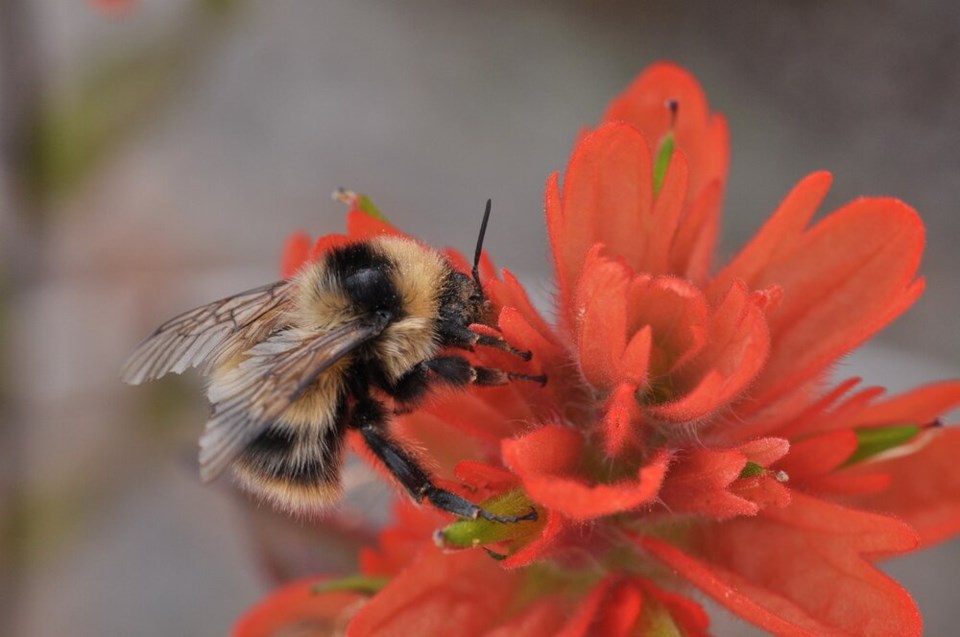Wild pollinators, like bees, moths and flies, are responsible for feeding the equivalent of more than 24 million Canadians a year — a combination of buzzing and flapping that also boosts the annual income of the country’s farmers by about $2.8 billion, new research has found.
The , published in Environment Research Letters last month, found that increasing wild pollinator habitat could boost crop yields enough to feed nearly 30 million Canadians more, while increasing farmer income by $3 billion.
To come up with those numbers, scientists from the University of British Columbia and the Nature Conservancy of Canada analyzed public crop data, farm income and adjacent pollinator habitats.
Those habitats — like wetlands, forests and grasslands — are home bases for species like bumblebees, who buzz inside flowers to vibrate off the pollen.
Matthew Mitchell, an assistant professor in UBC’s faculty of land and food systems who co-authored the study, said that without a place to live, the gap between how wild pollinators help crops now and the benefits they one day could provide will only grow.
“These are organisms that move pollen between flowers and allow that plant to reproduce,” said Mitchell. “But there's often not a lot of pollinator habitat nearby.”
The potential of wild pollinators to help crop production varied across the country, according to the study.
Saskatchewan, where canola and pea crops rely on pollinators to reproduce, was estimated to see the largest benefits, with a boost in wild pollinator habitat potentially raising farm income by $1.6 billion, while adding enough food production to feed an additional 11.5 million people. Farmland in Alberta could feed another 4.3 million people and generate an additional $597 million in farm income if wild pollinators were allowed to thrive.
And in British Columbia, improving pollinator habitat could feed an additional 68,000 people and boost income to farmers by $79 million, the study found.
“Even here, we need to think about how do we safeguard the pollinator habitat,” said Mitchell.
“We don't have as much cropland… [but] thinking about things like all of the orchard crops in the Okanagan, blueberries in the Lower Mainland, those pollinators are really important for the economic sufficiency of those farms.”
There could be trade-offs, warned Mitchell. If you put in new habitat for pollinators, you're also potentially taking away that same area that could grow more food. Mitchell said farmers might consider transforming low-yielding land that’s not as profitable into pollinator habitat in order to maximize benefits on all sides.
In their paper, Mitchell and his colleagues also call on the federal government to create a national strategy to safeguard wild pollinators, which like others around the world, have become increasingly threatened by pesticide use, climate change and diseases from invasive species.
“European honeybees are great, but we're also kind of putting all our eggs in one basket. And so having wild pollinators, and a diversity of wild pollinators, also means that if conditions change year to year, over long timescales, you know, some species may decline but other ones might take their place and still provide that pollination,” said Mitchell.
“It kind of provides us some insurance against future climate change.”



